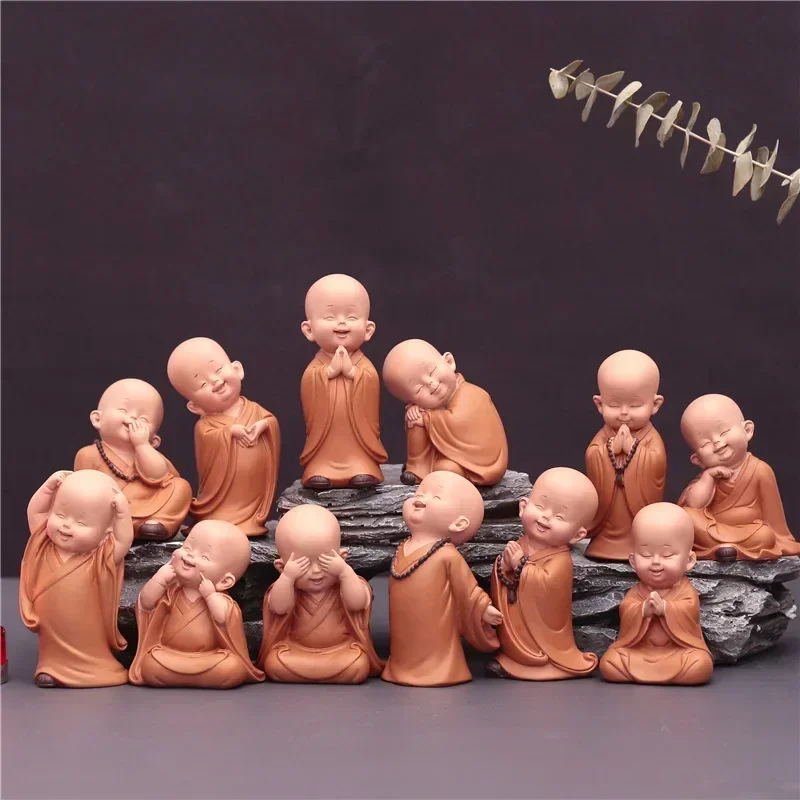Contents
Mysticism:
Mysticism is a broad and multifaceted term that encompasses a wide range of spiritual and experiential phenomena. At its core, mysticism refers to the direct, personal experience of the divine, the sacred, or the ultimate reality. This experience is often described as transcendent, transformative, and deeply meaningful, offering individuals a profound connection to something greater than themselves. Mystical experiences are not limited to any particular religious or cultural tradition but can be found across various belief systems and throughout human history.
The essence of mysticism lies in the direct, unmediated encounter with the divine or the ultimate reality. Unlike more intellectual or doctrinal approaches to spirituality, mysticism emphasizes the subjective, experiential aspect of the sacred. Mystics seek to transcend the boundaries of the individual self and to merge with a larger, universal reality. This process of self-transcendence is often described as a state of “union” or “oneness” with the divine, where the individual ego is dissolved and a deeper sense of interconnectedness is experienced.
Mystical experiences can take many forms, ranging from ecstatic visions and auditory phenomena to profound states of inner peace, joy, and awe. These experiences are often considered to be ineffable, meaning that they are difficult to put into words or to fully convey to others. Nonetheless, mystics throughout history have attempted to share their insights and to describe the transformative nature of their encounters with the sacred, often through poetry, art, and spiritual writings.
Key Takeaways
- Mysticism is a complex and multifaceted concept that is difficult to define.
- Mystical experiences are often characterized by a sense of unity, transcendence, and ineffability.
- Mysticism can be found across a wide range of religions and cultures, from Christianity to Hinduism to Sufism.
- Altered states of consciousness, such as meditation or psychedelic use, can play a role in facilitating mystical experiences.
- While some view mysticism as a path to spiritual enlightenment, others criticize it as being too subjective and unverifiable.
The Origins of Mysticism
Mystical traditions have existed in various forms throughout human history, across different cultures and religious traditions. The roots of mysticism can be traced back to ancient civilizations, such as those of India, China, and the Middle East, where spiritual and philosophical practices aimed to transcend the ordinary and connect with the divine.
In the ancient Indian tradition, the Upanishads, a collection of sacred texts, laid the foundation for the development of mystical thought and practice. These texts explored the concept of Brahman, the ultimate reality or the divine essence that underlies all of existence, and the idea of Atman, the individual soul or self that is believed to be identical with Brahman. The practices of yoga, meditation, and contemplation were developed as means to achieve this state of union with the divine.
Similarly, in ancient China, the Taoist tradition emphasized the importance of aligning oneself with the Tao, the ultimate, ineffable source of all existence. Taoist practices, such as meditation and the cultivation of inner stillness, were aimed at transcending the limitations of the individual self and achieving a state of harmony with the natural world.
In the Middle East, the mystical traditions of Sufism within Islam and Kabbalah within Judaism have a long and rich history. Sufi mystics, known as Sufis, sought to cultivate a deep, personal relationship with the divine through practices such as dhikr (the remembrance of God) and sama (spiritual music and dance). Kabbalists, on the other hand, explored the hidden, esoteric dimensions of the divine through the study of sacred texts and the practice of meditation and ritual.
The emergence of these diverse mystical traditions across different cultures and belief systems suggests a common human desire to transcend the ordinary and to connect with the sacred or the ultimate reality. While the specific practices and beliefs may vary, these traditions share a fundamental goal of seeking a deeper understanding of the nature of existence and the human experience.
Key Characteristics of Mystical Experiences
Mystical experiences are often described as profound, transformative, and ineffable, meaning they are difficult to put into words. These experiences are characterized by a range of common features that set them apart from ordinary states of consciousness.
One of the most striking characteristics of mystical experiences is a sense of unity or oneness. Mystics often report a profound feeling of interconnectedness, where the boundaries between the self and the external world dissolve, and they experience a deep sense of belonging to a larger, universal reality. This state of unity is often accompanied by a transcendence of the individual ego, where the sense of a separate, autonomous self is temporarily suspended or dissolved.
Another common feature of mystical experiences is a deep sense of peace, joy, or awe. Mystics often describe a profound state of inner calm, a sense of being in the presence of something greater than themselves, and a feeling of profound wonder and reverence. This emotional and experiential component is a crucial aspect of mystical encounters, as it goes beyond the purely intellectual or conceptual understanding of the divine or the sacred.
Mystical experiences are also often characterized by a sense of timelessness and spacelessness. Mystics may report a suspension of the normal perception of time, where the present moment becomes all-encompassing and the usual sense of temporal progression is lost. Similarly, the experience of space may be transformed, with a sense of boundlessness or a dissolution of the boundaries between the self and the external world.
Finally, mystical experiences are often described as ineffable, meaning that they are difficult or impossible to fully convey in language. Mystics frequently struggle to find the right words to capture the depth and complexity of their experiences, often resorting to metaphors, poetry, or symbolic representations to communicate the essence of their encounters with the sacred.
These key characteristics of mystical experiences – the sense of unity, the transcendence of the self, the profound emotional and experiential components, and the ineffable nature of the encounter – have been the subject of extensive study and exploration within various academic and spiritual traditions.
Mysticism Across Religions and Cultures
Mystical traditions can be found in various world religions, including Hinduism, Buddhism, Christianity, Islam, and Judaism. While the specific practices and beliefs may differ, these traditions share a common goal of seeking a deeper connection with the divine or the ultimate reality.
In Hinduism, the mystical traditions of Advaita Vedanta and Bhakti yoga have a long and rich history. Advaita Vedanta, a philosophical school of thought, emphasizes the non-dual nature of reality, where the individual self (Atman) is believed to be identical with the ultimate reality (Brahman). Bhakti yoga, on the other hand, focuses on the cultivation of devotional love and surrender to the divine.
In Buddhism, the mystical traditions of Zen and Tibetan Buddhism have gained widespread recognition. Zen Buddhism emphasizes the importance of direct, intuitive experience of the nature of reality, often through the practice of meditation and the study of Koan (paradoxical statements or questions). Tibetan Buddhism, with its rich symbolism and rituals, also incorporates mystical elements, such as the cultivation of altered states of consciousness and the exploration of the nature of the mind.
Within the Christian tradition, the mystical strands can be found in the writings and practices of various mystics, such as Meister Eckhart, Teresa of Ávila, and John of the Cross. These Christian mystics sought to cultivate a deep, personal relationship with the divine, often through the practice of contemplative prayer and the exploration of the inner life.
In Islam, the mystical tradition of Sufism has a long and influential history. Sufi mystics, known as Sufis, emphasize the importance of the direct, personal experience of the divine, often through the practice of dhikr (the remembrance of God) and the cultivation of a deep, devotional love for the divine.
Similarly, in Judaism, the mystical tradition of Kabbalah has been an integral part of the religious and spiritual landscape. Kabbalists have explored the hidden, esoteric dimensions of the divine through the study of sacred texts, the practice of meditation, and the use of symbolic rituals and practices.
While the specific beliefs and practices may vary across these different religious and cultural traditions, they all share a common thread – the pursuit of a deeper, more profound connection with the divine or the ultimate reality. Mysticism, in its various forms, has been a driving force in the spiritual and intellectual development of human civilization, offering individuals a means to transcend the limitations of the individual self and to find a sense of meaning and purpose in the face of the mysteries of existence.
The Role of Altered States of Consciousness
| Definition | Origin | Beliefs | Practices |
| Mysticism is the belief in the existence of realities beyond perceptual or intellectual apprehension that are central to being and directly accessible by subjective experience. | Mysticism has roots in various religious traditions, including Hinduism, Buddhism, Judaism, Christianity, and Islam. | Beliefs vary, but common themes include the existence of a divine or ultimate reality, the possibility of direct experience of that reality, and the belief that this experience can lead to spiritual transformation. | Practices vary, but common ones include meditation, prayer, contemplation, and asceticism. |
Mystical experiences are often associated with altered states of consciousness, such as those induced through meditation, prayer, or the use of psychoactive substances. These altered states can facilitate a shift in perception and awareness, allowing individuals to transcend the boundaries of the ego and access deeper levels of consciousness.
Meditation, a practice that has been cultivated for centuries across various spiritual traditions, is often considered a key pathway to mystical experiences. Through the practice of focused attention, mindfulness, and the cultivation of inner stillness, individuals can enter into altered states of consciousness that are characterized by a sense of unity, transcendence, and profound inner peace.
Similarly, the practice of prayer, particularly in traditions that emphasize contemplative or mystical forms of prayer, can also lead to altered states of consciousness. In these practices, individuals may engage in deep, focused attention on the divine, often accompanied by a sense of surrender, devotion, and a profound connection to the sacred.
The use of psychoactive substances, such as certain plant-based compounds or synthetic drugs, has also been associated with mystical experiences. These substances can induce altered states of consciousness that are characterized by a sense of unity, transcendence, and a profound shift in perception and awareness. However, the use of such substances remains a controversial and complex topic, with ongoing debates about their safety, legality, and the authenticity of the experiences they can produce.
Regardless of the specific means by which they are induced, altered states of consciousness play a crucial role in the realm of mysticism. These altered states allow individuals to transcend the limitations of the individual ego and to access deeper levels of consciousness, often leading to profound and transformative experiences of the divine or the ultimate reality.
It is important to note, however, that the pursuit of altered states of consciousness should be approached with caution and respect, as they can be potentially disruptive or even dangerous if not undertaken with proper guidance and preparation. Responsible and ethical practices, grounded in spiritual and philosophical traditions, are essential for individuals seeking to explore the realms of mysticism and altered consciousness.
Mysticism and the Search for Meaning
Mystical experiences are often seen as a means of finding deeper meaning and purpose in life. By transcending the limitations of the individual self, mystics seek to connect with a larger, universal reality and to find a sense of belonging and purpose within it.
The quest for meaning and purpose is a fundamental aspect of the human experience. Throughout history, individuals have grappled with questions about the nature of existence, the meaning of life, and their place within the larger scheme of things. Mysticism offers a unique perspective on this search, suggesting that the answers to these profound questions may lie beyond the confines of the individual ego and the material world.
Mystics often describe their experiences as a profound sense of interconnectedness, where the boundaries between the self and the external world dissolve, and they feel a deep sense of belonging to a larger, universal reality. This experience of unity can provide a powerful antidote to the feelings of isolation, disconnection, and existential angst that can arise in the modern world.
Moreover, the transcendence of the individual self that is often associated with mystical experiences can lead to a deeper understanding of the nature of the human condition. By letting go of the ego and its attachments, mystics may gain a more expansive and compassionate perspective on the human experience, one that is grounded in a sense of interconnectedness and a deeper appreciation for the mysteries of existence.
The search for meaning and purpose is not limited to the realm of mysticism, of course. Philosophers, theologians, and thinkers from various disciplines have grappled with these questions throughout human history. However, the unique insights and experiences offered by the mystical traditions can provide a valuable complement to these more intellectual and conceptual approaches, offering a more direct and experiential path to the exploration of the deeper questions of human existence.
Ultimately, the pursuit of mystical experiences can be seen as a profound and transformative journey, one that has the potential to reshape an individual’s understanding of themselves, their place in the world, and the very nature of reality. By transcending the limitations of the individual self and connecting with a larger, universal reality, mystics may find a deeper sense of meaning, purpose, and belonging that can enrich and inform their lived experience.
Mysticism and the Transcendence of the Self
A key aspect of mysticism is the dissolution or transcendence of the individual ego or self. This process of self-transcendence is often described as a state of “union” or “oneness” with the divine or the ultimate reality.
The concept of the individual self, or the ego, is a central feature of the human experience. We typically perceive ourselves as separate, autonomous beings, distinct from the external world and from others. This sense of a distinct, individual self is often reinforced by our cultural and social conditioning, as well as our cognitive and perceptual biases.
However, the mystical traditions suggest that this sense of a separate self is ultimately an illusion, a construct of the mind that obscures a deeper, more fundamental reality. Mystics often describe a state of consciousness in which the boundaries between the self and the external world dissolve, and they experience a profound sense of unity and interconnectedness with all of existence.
This process of self-transcendence is often described as a “union” or “oneness” with the divine or the ultimate reality. In this state, the individual ego is dissolved, and the mystic experiences a profound sense of belonging and integration with a larger, universal reality. This experience can be deeply transformative, leading to a shift in perspective, a sense of inner peace and clarity, and a deeper understanding of the nature of the human condition.
The transcendence of the self is not a simple or straightforward process, however. It often requires a sustained and dedicated practice of spiritual and contemplative disciplines, such as meditation, prayer, or ritual. These practices are designed to quiet the mind, deepen self-awareness, and open the individual to the possibility of transcendent experiences.
Moreover, the process of self-transcendence can be challenging and even disorienting, as it involves letting go of the familiar and comfortable sense of self. Mystics often describe the experience as a “dark night of the soul,” a period of intense inner turmoil and uncertainty as the individual navigates the dissolution of the ego and the emergence of a new, more expansive sense of identity.
Despite the challenges, the transcendence of the self is often seen as a crucial aspect of the mystical journey. By letting go of the individual ego and its attachments, mystics can access a deeper, more profound understanding of the nature of reality and their place within it. This experience of self-transcendence can lead to a greater sense of compassion, humility, and connection with the world around them.
Practical Approaches to Cultivating Mystical Experiences
Various spiritual and contemplative practices, such as meditation, prayer, and ritual, are used to facilitate mystical experiences. These practices aim to quiet the mind, deepen self-awareness, and open individuals to the possibility of transcendent experiences.
Meditation is perhaps the most well-known and widely practiced approach to cultivating mystical experiences. Through the practice of focused attention, mindfulness, and the cultivation of inner stillness, individuals can enter into altered states of consciousness that are characterized by a sense of unity, transcendence, and profound inner peace. Meditation practices can take many forms, ranging from the simple observation of the breath to more advanced techniques, such as mantra recitation or visualization.
Prayer is another important practice in the realm of mysticism. In many religious and spiritual traditions, prayer is seen as a means of cultivating a deep, personal relationship with the divine or the ultimate reality. Contemplative forms of prayer, such as centering prayer or the Jesus Prayer, can facilitate altered states of consciousness and a sense of union with the sacred.
Ritual practices, such as those found in various religious and spiritual traditions, can also play a role in the cultivation of mystical experiences. Rituals can create a sacred space and a sense of reverence, and they can also induce altered states of consciousness through the use of music, movement, or the engagement of the senses.
In addition to these traditional spiritual practices, some individuals have also explored the use of psychoactive substances, such as certain plant-based compounds or synthetic drugs, as a means of accessing altered states of consciousness and mystical experiences. However, the use of such substances remains a controversial and complex topic, with ongoing debates about their safety, legality, and the authenticity of the experiences they can produce.
Regardless of the specific approach, the cultivation of mystical experiences often requires sustained and dedicated practice, as well as a willingness to let go of the individual ego and to open oneself to the possibility of transcendent experiences. It is important to note that the pursuit of mystical experiences should be undertaken with care and respect, and with the guidance of experienced practitioners or spiritual teachers, as the process can be challenging and even disruptive if not approached with the appropriate preparation and support.
The Ongoing Debate Around Mysticism
Mysticism has been the subject of much scholarly and philosophical debate, with some questioning the validity and authenticity of mystical experiences. However, the continued interest and exploration of mysticism in various fields, including psychology, neuroscience, and religious studies, suggest that it remains a compelling and relevant area of human experience.
One of the primary criticisms of mysticism is the challenge of verifying the authenticity and objectivity of mystical experiences. Since these experiences are often described as ineffable and transcendent, it can be difficult to subject them to empirical scrutiny or to establish a clear, universal definition of what constitutes a “true” mystical experience.
Additionally, some scholars have raised concerns about the potential for mystical experiences to be influenced by cultural, social, and psychological factors, questioning whether they represent a genuine encounter with the divine or the ultimate reality, or simply a product of the individual’s own psychological and cognitive processes.
Despite these critiques, the study of mysticism has continued to evolve and expand, with researchers in various fields exploring different aspects of mystical experiences. Some scholars have focused on the psychological and neurological underpinnings of mysticism, seeking to understand how these experiences manifest in the brain and impact mental health. Others have delved into the cultural and historical contexts of mysticism, examining how it has been interpreted and practiced across different traditions and periods. Overall, the interdisciplinary nature of mysticism research highlights its enduring relevance and the ongoing quest to unravel the mysteries of the mystical experience.










